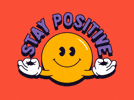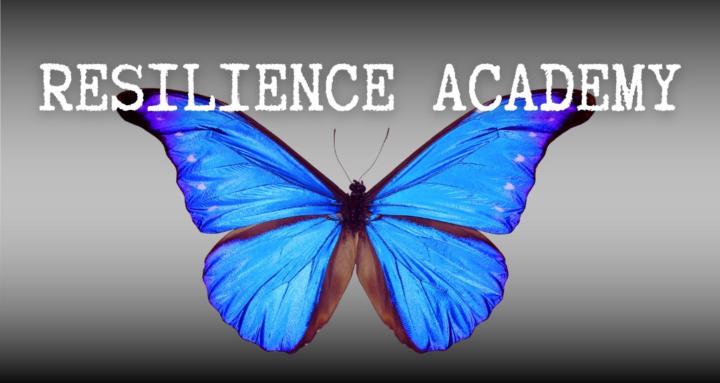Strength in Numbers: Your Support Network Matters Even More During the Holidays
As much as we all love the holiday season, it really can be a mixed bag. There’s joy… but there’s also pressure. There are celebrations… but sometimes there’s loneliness. There’s excitement… and then there’s the stress, the noise, the juggling, and the 'I just need five minutes to myself' feeling. And honestly, this is when our resilience gets tested the most. It’s also when our support networks matter more than ever. Over the years, I’ve learned that resilience isn’t something we magically build by ourselves. It comes from the people who show up, check in, and make life feel a little lighter. The ones who remind us we don’t have to carry everything alone. Even now, living with MND, my support network is one of the biggest reasons I can keep doing what I love. The people in my corner keep me grounded, calm and hopeful, especially when life gets noisy or overwhelming… which the holidays often are. So as we get closer to the end of the year, I want to encourage you to take a moment and think about your own support network. Not in a formal way. Just a simple check-in with yourself: Who helps you feel safe? Who lifts your energy? Who actually listens? Who do you feel like 'you' around? And just as important…Who do you support? Where do you show up for others? Where could you offer a bit more kindness or connection? The holidays are a great time to strengthen these bonds. It doesn’t need to be anything big... it could be a quick message, a coffee catch-up, a walk, a thank-you, or simply saying 'yes' when someone offers help. Strong relationships give us the safety net we need, and that safety net makes resilience so much easier to access. You don’t have to be strong all the time. You just need people who remind you you’re not alone. So this season, aim for connection, not perfection… your resilience will thank you. Who’s one person you’d like to reconnect with or lean on a little more these holidays?
2
0

What’s Your Silliest Stress Reliever?... Be Honest!
Let’s have a bit of fun today. We talk a lot about the serious stuff in here… mindset, emotional regulation, nervous system resets, growth, challenges. But sometimes resilience also looks like doing the most random, ridiculous thing just to keep yourself sane. I know I’m not the only one... so, what’s your silliest stress reliever? You know… the thing that helps you reset even though it makes absolutely no sense to anyone else. Things like: • vacuuming like you're training for the Olympics • talking to your dog like they’re your counsellor • reorganising a drawer you already organised last week • dancing in the kitchen to 90s bangers • aggressively watering the plants These quirks say a lot about how we cope when things feel heavy - it's important to be able to lighten things up for a change! What’s your weird little stress reliever? No judgement here at all!

Nervous System Reset Tools
Have you tried any of these? Let me know your favourite in the poll below. 1. Box Breathing (4–4–4–4) - Inhale for 4 - Hold for 4 - Exhale for 4 - Hold for 4 - Repeat 4 rounds This calms your nervous system almost instantly. 2. The 5–4–3–2–1 Grounding Technique Perfect when you feel overwhelmed: - 5 things you can see - 4 things you can feel - 3 things you can hear - 2 things you can smell - 1 thing you can taste This anchors you in the present moment. 3. Name the Emotion When you name how you feel — 'I’m frustrated', 'I’m anxious', 'I’m overwhelmed' — you reduce the emotional intensity. It gets you out of your emotional brain and back into your logical brain. 4. Slow Exhale Reset The exhale is what activates your calm response. Try breathing out longer than you breathe in — for example: Inhale 4, exhale 6. Why This Matters for Your Resilience Emotional regulation is the bridge between stress and resilience. When you can regulate your emotions, you can: ✔ respond instead of react ✔ bounce back quicker ✔ stay grounded under pressure ✔ communicate more effectively ✔ protect your energy ✔ make better decisions ✔ show up as the person you want to be Most importantly, you stop feeling like life is happening to you — and start feeling like you’re back in the driver’s seat. 👆Check out my 4 easy steps to build greater resilience under the Resilience Roadmap tile in the classroom tab.
Poll
2 members have voted

Motivation Monday: Turning Comparison Into Inspiration
We’ve all been there. Scrolling, watching, or hearing about someone else’s highlight reel - and suddenly, your own progress feels... well, small. You've probably heard the quote, comparison is the thief of joy. But, what if you flipped the script? What if you saw someone else’s success as proof that it’s possible - not a reminder of where you “should” be? This week, try this: - Notice when comparison shows up - what does it trigger? - Use it as a clue. What are you really craving or working towards? - Turn it into inspiration. Let others' wins fuel your own fire. Have you ever been inspired (instead of discouraged) by someone else’s progress? Share what it sparked in you your story might be the encouragement someone else needs today.

The Science Behind Your Bounce Back
Your bouncebackability has a lot to do with how quickly your brain and nervous system shift from stress mode back into a calmer, regulated state. When that internal alarm stops blaring, you can think clearly again. You can see options instead of panic. You start making choices that support you rather than reacting from fear or overwhelm. Every time you move from stress → regulation → clarity, you strengthen the pathway that helps you bounce back next time. It’s repetition, not perfection, that builds resilience. When I lost my ability to speak, it was one of the biggest knocks I’ve had. And I won’t sugarcoat it... I didn’t bounce back overnight. But I did bounce back. Not by fighting harder. Not by pretending everything was fine. But by taking it one tiny moment at a time. I learned new technology. I found new ways to share my message. I created new opportunities to inspire others, even without a voice. My bouncebackability didn’t take me back to who I was. It helped me become who I am now. I’d love to hear from you. What’s one moment where you surprised yourself with your ability to bounce back?

1-30 of 39

skool.com/leannesklavenitis
The No 1 community to Build Resilience, Wellbeing and Inspiration for People who are suffering from Loss or a Debilitating Condition
Powered by





